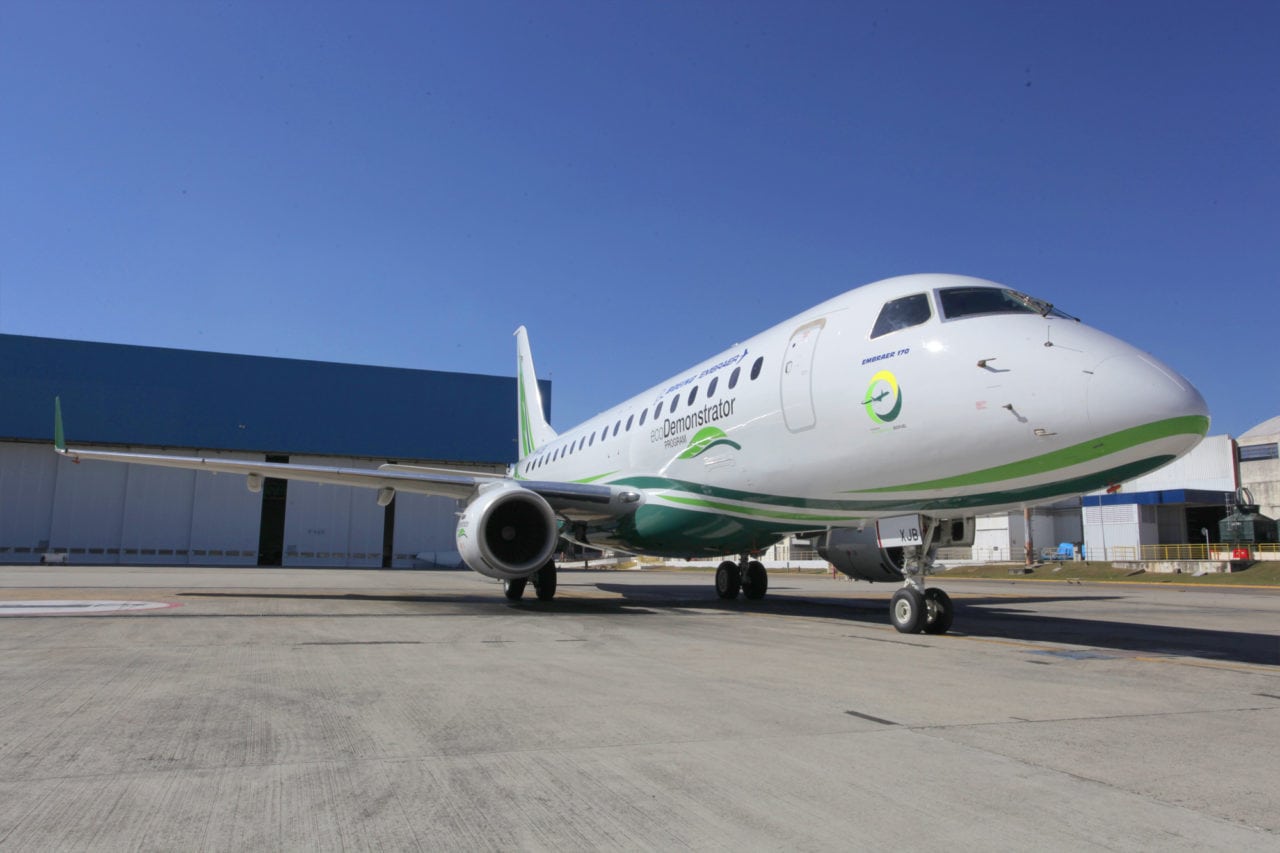[Avionics Today 07-08-2016] Boeing and Embraer have unveiled a new ecoDemonstrator program, which will use an Embraer E170 aircraft as a flying testbed for environmental technologies. The program expands Boeing and Embraer’s cooperation agreement and will test technologies to improve airplane environmental performance and accelerate their introduction into the marketplace.
 |
| Boeing’s new Embraer E170 ecoDemonstrator aircraft. Photo: Boeing |
The E170 will feature advanced environmental technologies that will undergo operational testing in Brazil during August and September. The ecoDemonstrator flights will test several technologies designed to reduce carbon emissions, fuel use and noise including:
• Light Detection and Ranging (LIDAR) technology using lasers to measure air data parameters such as true airspeed, angle of attack and outside air temperature. LIDAR shows potential to increase air data reliability by complementing current sensors, which could lead to further innovations that improve fuel efficiency and reduce carbon emissions;
• An “ice phobic” paint designed to reduce icing and help prevent accumulation of dirt and bugs due to its low adhesive property. The paint can help operators save water by reducing the need for frequent aircraft washing;
• A new wing design with improved slats to reduce noise on takeoff and approach;
• Sensors and air visualization techniques near the wing surface to better understand in-flight aerodynamics; and
• A Brazilian-produced biofuel blend made up of 10 percent bio-kerosene and 90 percent fossil kerosene, the maximum mixture according to international standards. Studies have shown that sustainably produced aviation biofuel emits 50 to 80 percent lower carbon emissions through its life cycle than fossil jet fuel.
To date, the ecoDemonstrator program has tested several technologies, using a Next-Generation 737-800 (2012), 787 (2014) and 757 (2015) as flying testbeds.